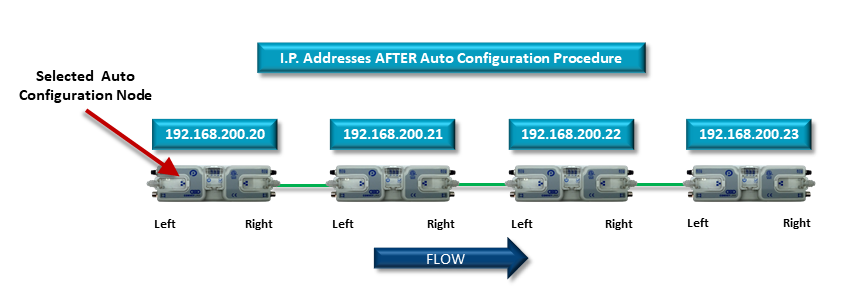All *ConveyLinx-Ai Family Module*s communicate over Ethernet network and use TCP/IP based protocols for normal function. All TCP/IP protocols require that each device on a network have a unique I.P. address assigned to it in order to function properly.
An I.P. address is in the format of: AAA.BBB.CCC.DDD where AAA, BBB, CCC, and DDD are numerical values between 0 and 255.
For example; if a module has an I.P. address of “192.168.25.20” then its Subnet address is “192.168.25” and its Node is 1 (i.e. 20-19 = 1)
At the factory, each and every module is assigned an I.P. address that is used by automated testing equipment and fixtures so that every module is verified prior to shipment. When a module is taken “out of the box” it will still have this I.P. address stored in its memory.
When the Auto Configuration Procedure is initiated; one of the many things that occur is that each module is automatically assigned a new I.P. address. This I.P. address for all modules is determined by the Subnet of the I.P. address already stored inside the most upstream module. Even if all downstream modules from the most upstream have the same or different Subnet or Node values; these downstream modules will have their Subnet changed to the existing Subnet of the most upstream module. Furthermore, when the Auto Configuration Procedure occurs; the most upstream module will also have its DDD octet value changed to 20. All downstream Modules will then have their respective DDD values automatically set beginning with 21.
An Example
Here is a 4-module network with possible I.P. addresses that could have been on the module from the factory. Note that their Subnets could be different as well as there could be duplicate addresses.

Once the Most Upstream Module is identified as the Selected Auto-Configuration Node and when the Auto-Configuration Procedure is performed; all 4 modules will have their I.P. address configured as shown.



